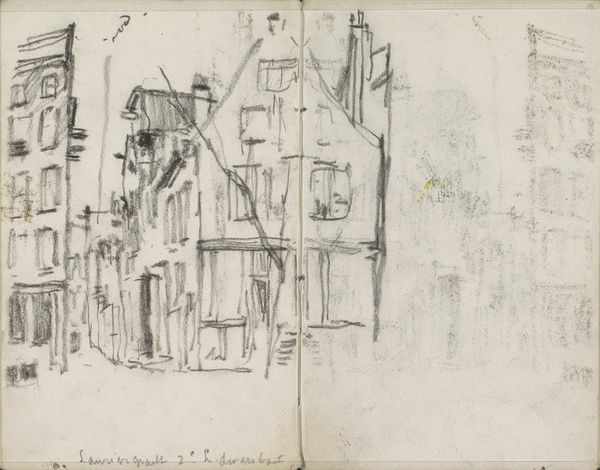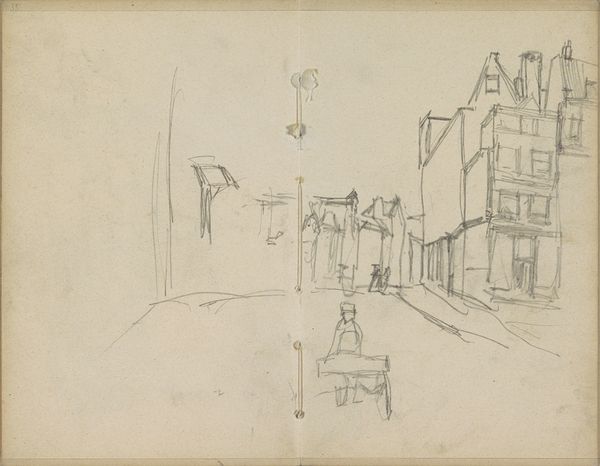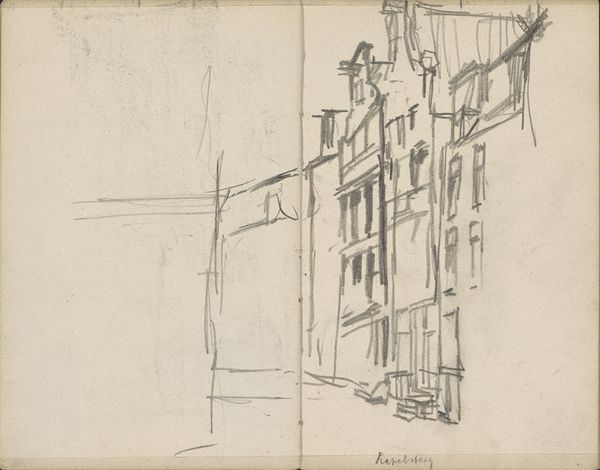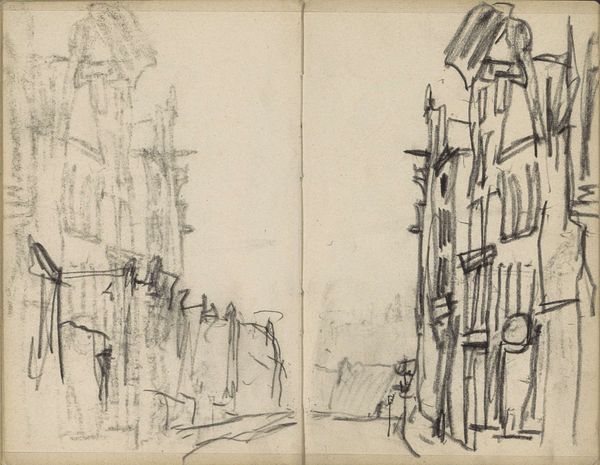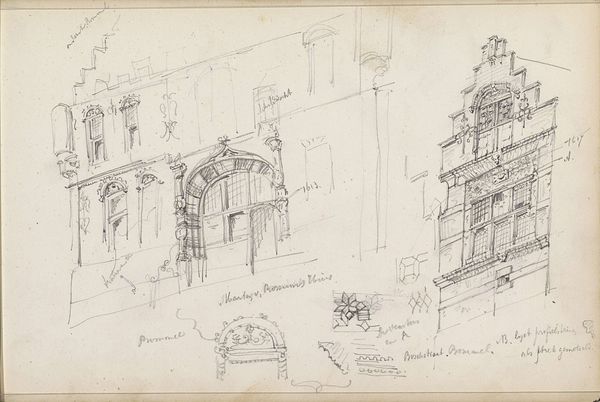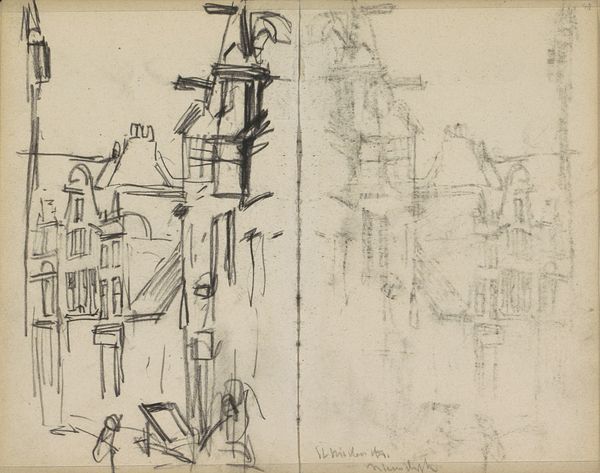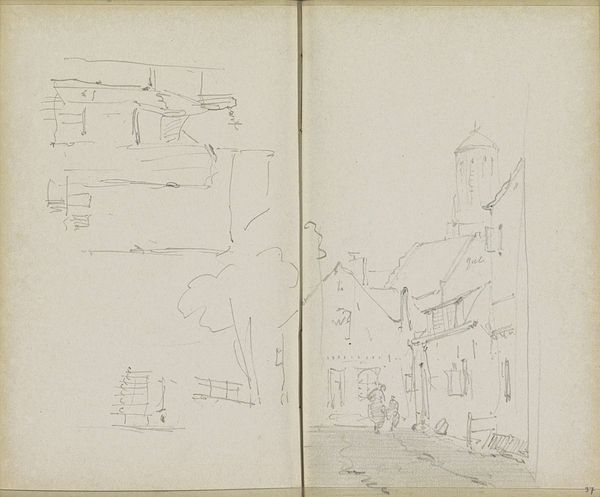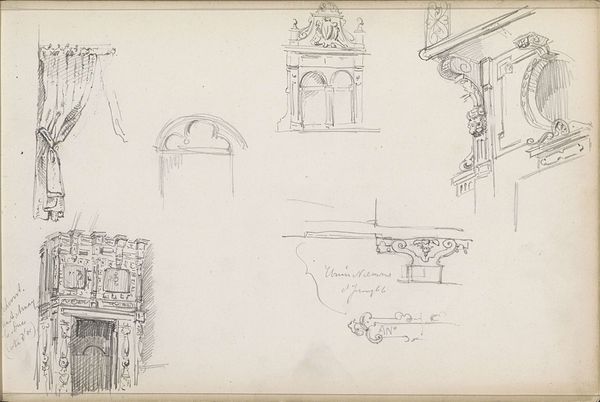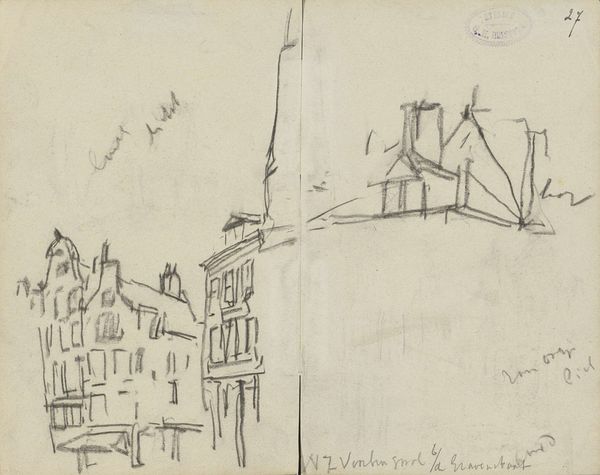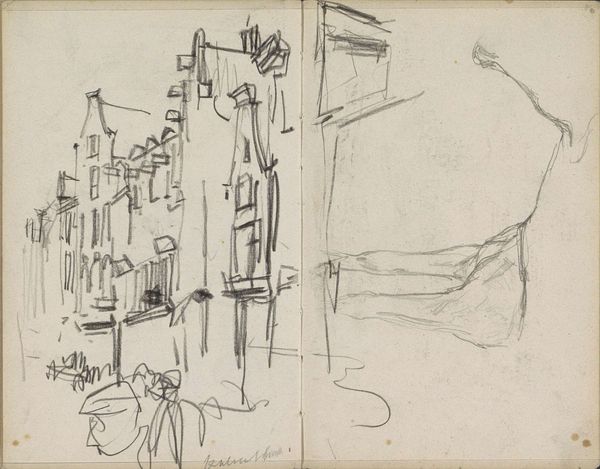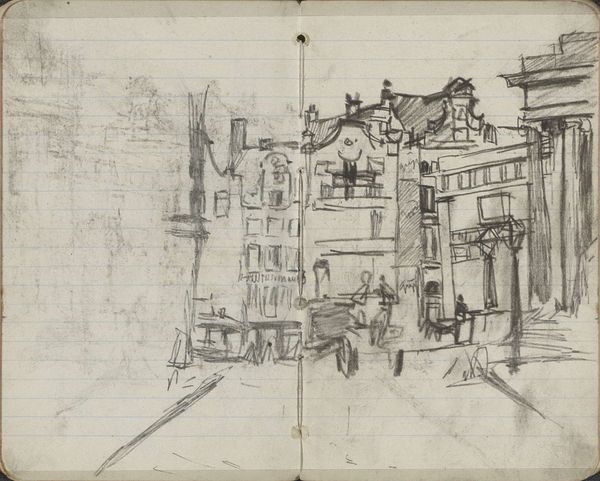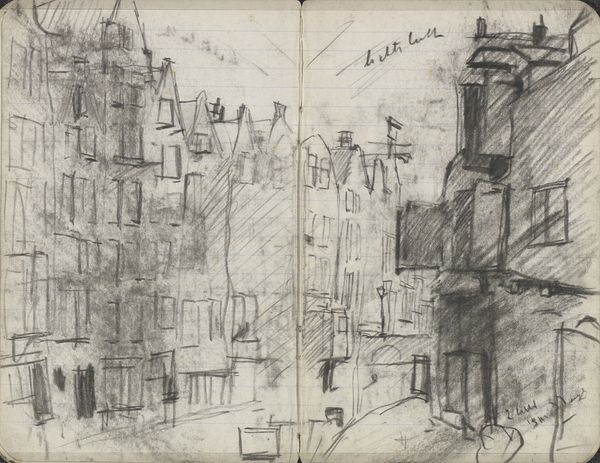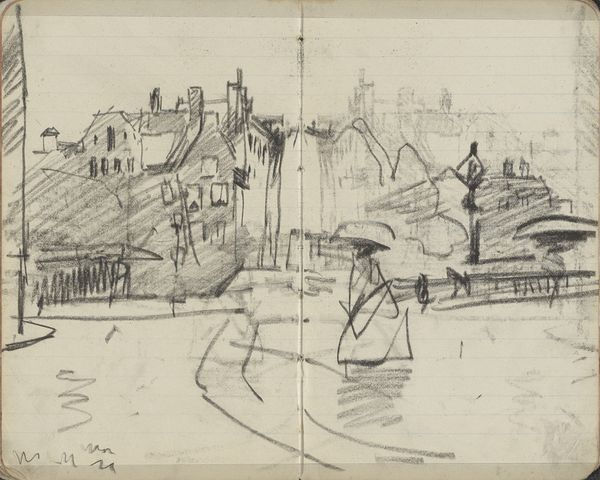
drawing, paper, graphite
#
drawing
#
pen sketch
#
sketch book
#
hand drawn type
#
paper
#
personal sketchbook
#
sketchwork
#
pen-ink sketch
#
pen work
#
graphite
#
sketchbook drawing
#
cityscape
#
sketchbook art
#
modernism
#
realism
#
initial sketch
Copyright: Rijks Museum: Open Domain
Curator: Here we have George Hendrik Breitner’s "Gezicht in Amsterdam," a graphite and pen drawing from 1917, housed in the Rijksmuseum. The sketch-like quality gives it an unfinished, almost ephemeral feeling, wouldn't you say? What are your first impressions? Editor: Yes, absolutely. I immediately notice the visible, raw quality of the materials, particularly the graphite on the paper, creating that unfinished and temporal atmosphere. I’m also drawn to the choice of such a seemingly mundane subject - just a view of Amsterdam. How do you interpret that choice? Curator: It’s precisely that "mundane subject" that interests me. Consider the context: 1917. While the Netherlands remained neutral during World War I, resources were scarce. Breitner using readily available, inexpensive materials like graphite and paper highlights the economic realities and material constraints impacting artistic production at the time. Doesn't this refocus our understanding away from "artistic genius" and toward the means of its making? Editor: That's a fascinating point! It shifts my perspective entirely. I was initially focused on the artistic intention and the visual representation. But thinking about the material circumstances of its creation makes it even more compelling. Curator: Exactly! The act of sketching itself – quick, immediate, and reproducible – further democratizes art. Breitner isn’t crafting a grand statement piece demanding expensive materials; he’s documenting a fleeting moment with what's at hand, embracing a new kind of accessibility. How does this material-centric perspective reshape your understanding of Realism, if at all? Editor: It definitely challenges my traditional view of Realism as simply representing reality. Thinking about the material constraints and the deliberate choice of modest materials opens up this entirely new way to interpreting the artist's relationship with the subject and the wider context. Curator: Precisely. So, reflecting on Breitner's sketch, we see how focusing on the materials and production methods gives us a deeper understanding of the artist, the artwork, and the societal context in which it was made. Editor: I've gained such a greater awareness of the impact that accessibility of materials, such as paper and graphite, would have on an artist such as Breitner.
Comments
No comments
Be the first to comment and join the conversation on the ultimate creative platform.
